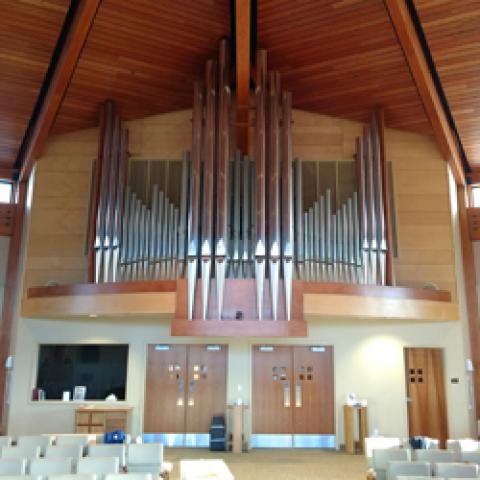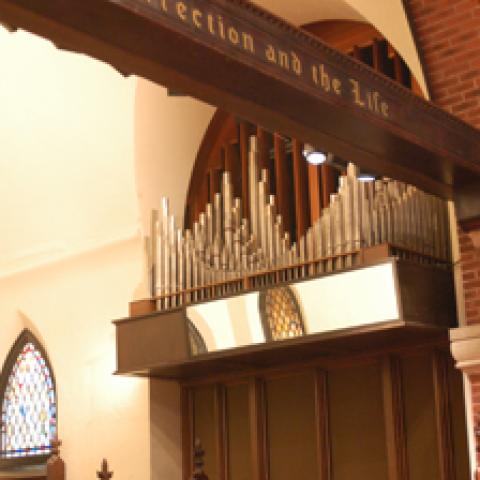
Berghaus Pipe Organ Builders of Bellwood, Illinois, has completed rebuilding the organ of First United Methodist Church, La Grange, Illinois. The three-manual, 55-stop, 41-rank organ uses resources from the church’s former M. P. Möller Opus 8261, built in 1956 with additions in 1963. (For further information on this congregation and its organs, see the June 2016 issue, pages 20–21.) Berghaus restored all existing pneumatic windchests and added new custom-built, electro-mechanical windchests for new ranks in the Swell and Pedal divisions.
The Great division contains ranks that are either unenclosed (situated behind the new 8′ 1st Open Diapason) or enclosed with the Choir. Independent principal and flute ranks were installed in the Swell and comprise both original and new pipework. Nine new stops (including two mixtures) were added to the organ to augment the upperwork and eliminate some of the unification of the original instrument. The Möller three-manual console was extensively refurbished and outfitted with a solid-state control system.
The organ was dedicated in service on October 22, 2017, followed by an afternoon recital performed by Christopher Houlihan.
For information: www.berghausorgan.com.




